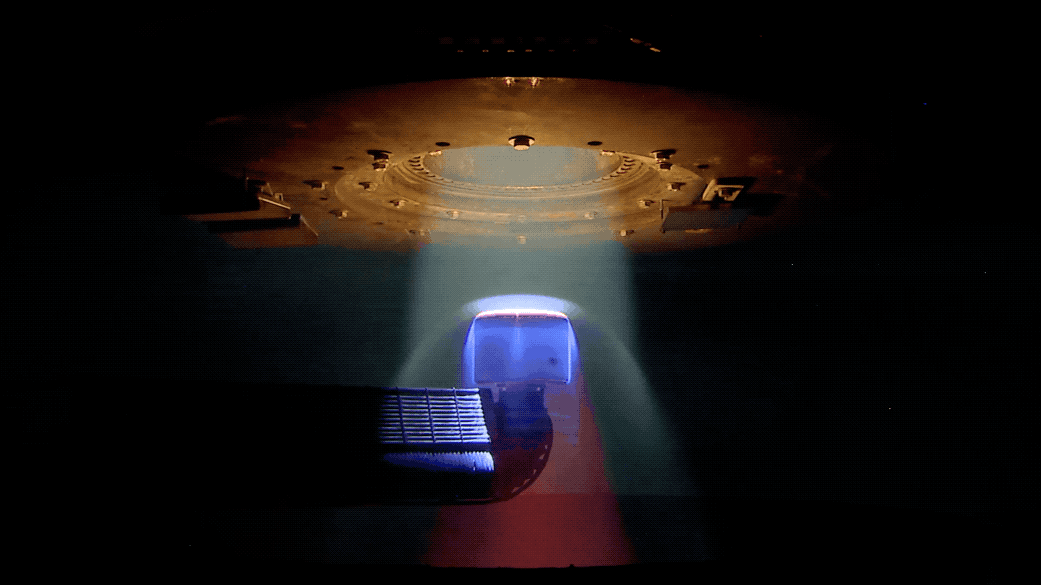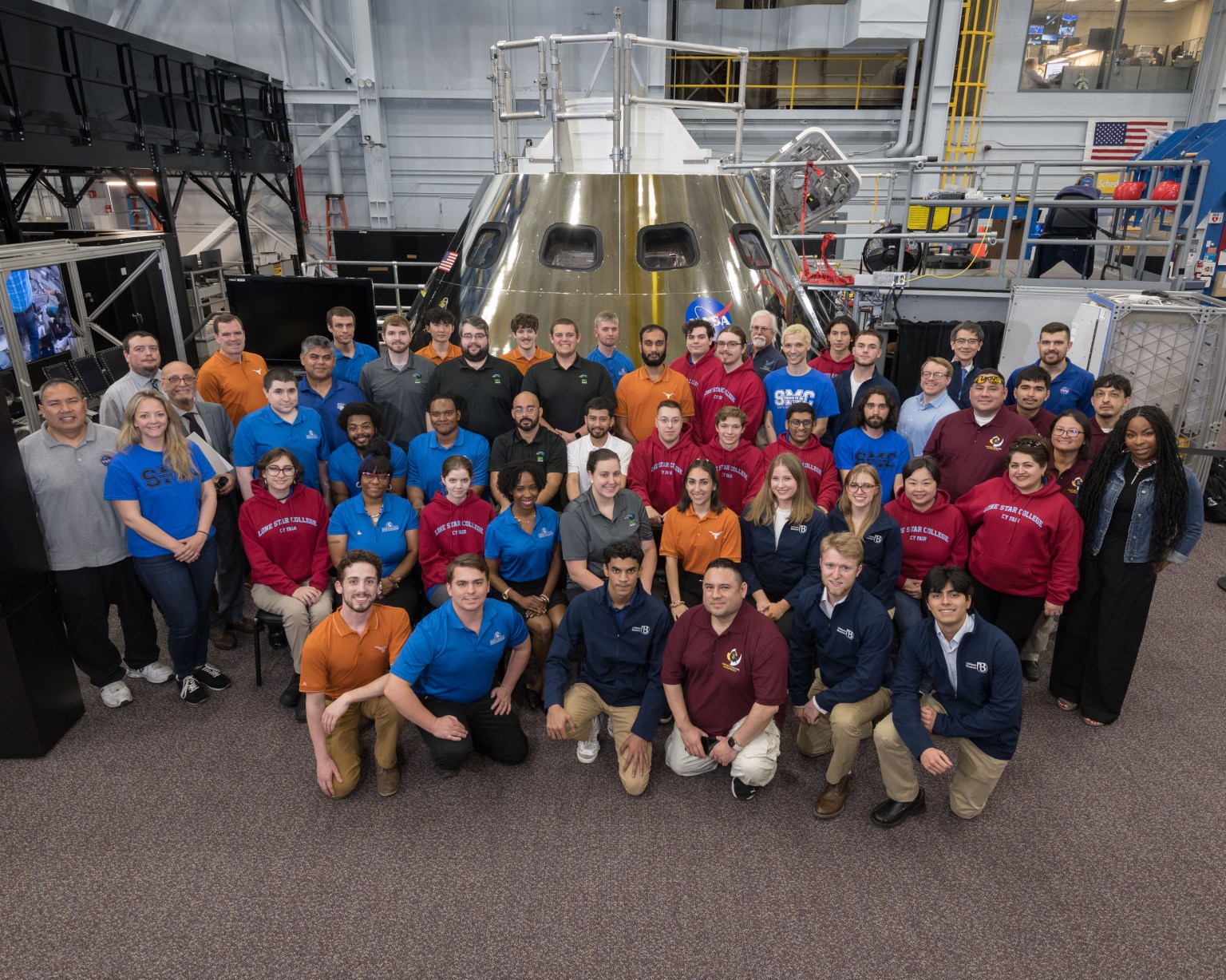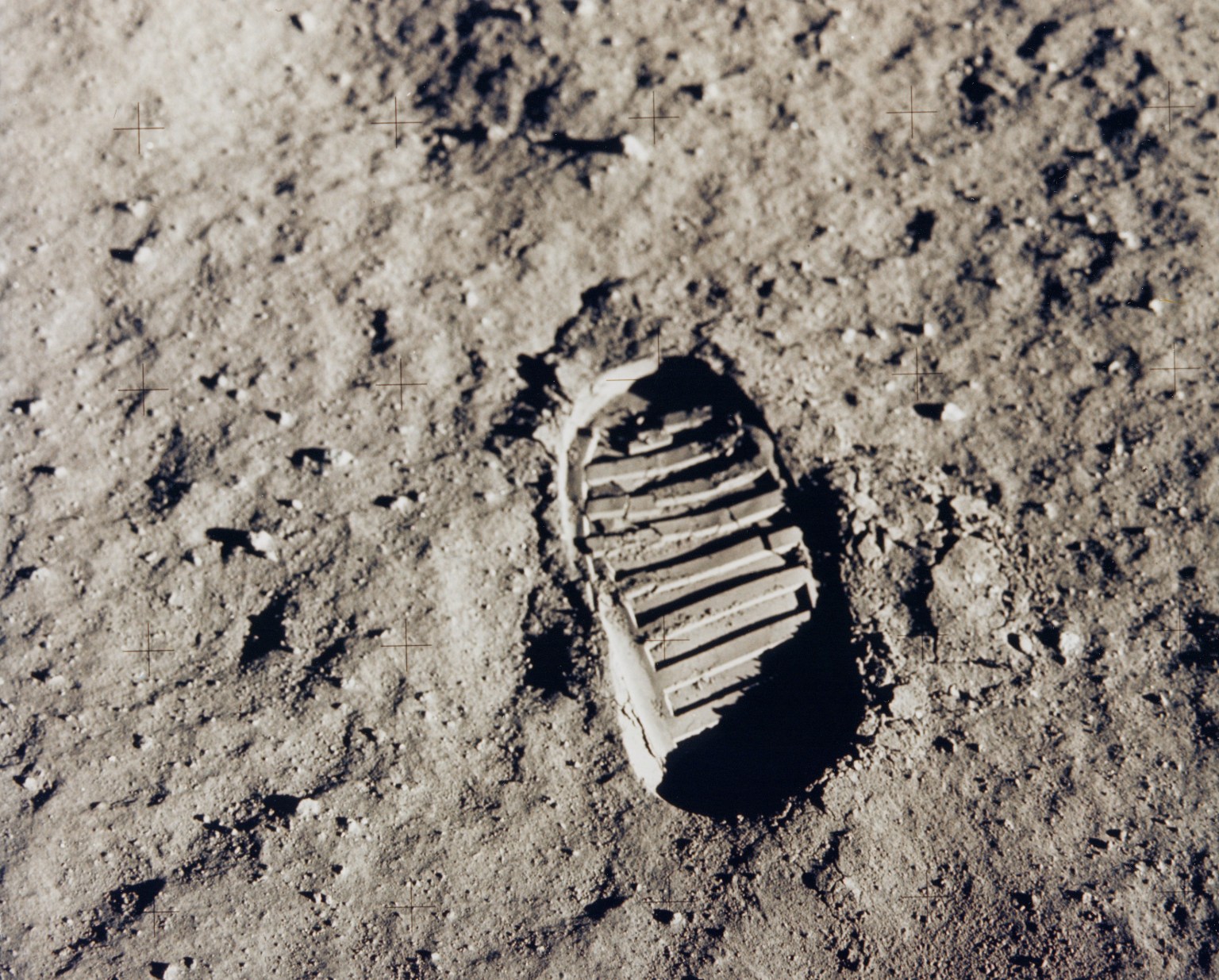About Entry Systems at NASA
If you look out the window of a spacecraft entering a planet’s atmosphere, the only view would be a wall of fire. For reentry into Earth’s atmosphere, spacecraft must withstand temperatures up to 7,000 degrees Fahrenheit, caused by the compression of gas and air particles against the surface of the spacecraft. They must also be engineered to fly at hypersonic speeds and ultimately undergo an enormous slowdown for safe landing.
The field of research known as entry systems uses heat shields, parachutes, software, and more to bring a spacecraft from the depths of space safely through a planet’s atmosphere. NASA’s role is to design technologies and materials that keep astronauts and payloads safe during one of the most dynamic and dangerous parts of spaceflight. Since spacecraft don’t just come back to Earth, but have other destinations like Mars and Venus, each requires specific kinds of protection to fit the needs of the mission.
Ames’ Role and Facilities
Since 1961, NASA’s Ames Research Center in California’s Silicon Valley has been a pioneer in entry systems. Building on H. Julian Allen’s blunt body theory – which stands as a foundation of space capsule design to this day – Ames has developed the facilities and expertise to lead this research and development area for NASA. The center’s entry systems design, testing, and collaboration with industry are vital elements of the agency’s strategy for exploration.
Learn more:
Thermal Protection Material Development
Ames has invented a variety of different heat shield materials and designs. Those materials include Avcoat, originally developed for the Apollo program and now used again for the Orion Crew Capsule’s heat shield, and the Phenolic-Impregnated Carbon Ablator, or PICA. Originally developed in the 1990s, PICA has served as a foundational heatshield material still used today.
Collaborations with private industry have also supported heat shield development for commercial partners, such as the PICA-X variant designed by SpaceX. Ames continues pushing the boundaries of heat shield technologies, with innovative deployment designs and more protective materials to enable safe travel across our solar system for future crewed and uncrewed missions.
Heat Shield Design
The heat shield is the first line of defense in protecting the spacecraft, and having the right materials is essential. But exactly what shape should the heat shield be? How thick? How much of the spacecraft does it need to cover? Over the years, Ames has developed a variety of thermal protection systems to bring missions home from almost any destination.
Heat shields designed by Ames have been used for a variety of missions, including the Apollo missions, the Mars Science Laboratory, the Mars 2020 mission, and more. For sample return missions, heat shields are of even more importance to protect precious samples of material from space. The Stardust mission’s return capsule, designed at Ames, retrieved particles from a comet’s tail and returned them to Earth in 2006, becoming the fastest human-made object to enter Earth’s atmosphere, at 28,600 miles per hour.
Arc Jet Facilities
To ensure these materials and designs can get the job done, Ames researchers simulate atmospheric entry on the ground through testing. Specialized facilities within the Ames Arc Jet Complex simulate the aerothermodynamic heating that a spacecraft endures throughout hypersonic atmospheric entry to planets, and also tests potential thermal protection materials. In these facilities, chambers simulate entry conditions by artificially creating a dissociated gas at temperatures hotter than the surface of the Sun and blasting it at high speeds against heat shield test models to see how they perform. This gives researchers the ability to simulate what the heat shield will experience during entry, providing data to improve and certify designs.
Modeling and Simulations
In addition, models and simulations for atmospheric entry are key technologies to ensure mission success against such extreme conditions of entry. Ames utilizes its supercomputing capabilities in conjunction with its local entry systems expertise to use predictive modelling to rigorously examine the physical and chemical processes that take place during entry. Those computational tools can also support basic aerodynamic and aerothermodynamic modelling to identify and solve technical challenges and assist in guidance, navigation, and control simulations. Physical tests are required to understand the unique characteristics about how different materials and designs work, but with those known, many variables can be modeled in computers to run virtual tests. Both the physical and simulated tests are necessary to identify and correct fault points in entry system designs long before they are used to protect payloads and astronauts from the dangers of atmospheric conditions.
Featured Examples
Entry Systems Expertise for the Artemis and Commercial Crew Programs
Private companies already play an instrumental role in the U.S. space program by ferrying critical research, supplies and other cargo to the international space station through commercial resupply services contracts. In this next phase, commercial crew partners Boeing and SpaceX will carry humans, like a taxi or a city bus shuttling people to their destination and home again. NASA’s goal is to become one customer of many customers in a robust low-Earth orbit economy, enabling the agency to realize the next generation of human space exploration through the Artemis program to the Moon and on to Mars. Getting humans to space and home again safely is a truly niche enterprise. The companies building a commercial space industry often turn to NASA for unique facilities and skill sets they need to do this work. At Ames, our wind tunnels take models of commercial spacecraft and blast them with air to see how the designs will hold up in flight. This work helped improve the ascent and launch abort systems of these spacecraft using experience gained from the development of NASA’s Orion crew vehicle and Space Launch System rocket, or SLS. To ensure spacecraft can return back home, Ames’ Arc Jet Complex can simulate the blazing heat generated while entering Earth’s atmosphere. Whether commercial partners develop their own heatshield materials or use NASA’s designs, testing their performance at extreme temperatures ensures they’re up to the task. These tests are supplemented and strengthened by virtual simulations performed on NASA’s supercomputers.
Learn more:
- From Takeoff to Landing, NASA and Boeing Work Together to Launch Commercial Crew
- Ames Contributions to SpaceX Commercial Crew Missions
- Artemis, Humanity’s Return to the Moon
HEEET
The Heatshield for Extreme Entry Environment Technology, also known as HEEET, is a system to protect a probe against the extreme heat generated when passing through a planet’s atmosphere. HEEET uses a dual-layer, three-dimensional, woven material capable of reducing entry loads and lowering the mass of heat shields by up to 40%. The outer layer, exposed to a harsh environment during atmospheric entry, consists of a fine, dense weave using carbon yarns. The inner layer is a low-density, thermally insulating weave consisting of a special yarn that blends carbon and phenolic materials. The outer and inner layers are woven together in three dimensions, mechanically interlocking them so they cannot come apart. HEEET’s development is now complete, and ready to be used in future missions. It is currently the material that will be used for the Earth Entry Vehicle of our new Mars Sample Return Campaign.
Learn more:
ADEPT
The Adaptable, Deployable Entry Placement Technology, or ADEPT, is a foldable device that opens to make a round, rigid heat shield, called an aeroshell. This game-changing technology could squeeze a heat shield into a rocket with a diameter larger than the rocket itself. The design may someday deliver much larger payloads to planetary surfaces than is currently possible. Aeroshells slow spacecraft during entry and shield them from heat. ADEPT could be key to future NASA missions that require extra-large aeroshells to protect spacecraft destined to land on the surface of other planets, all without requiring larger rockets. The umbrella-like mechanical aeroshell design uses flexible 3D woven carbon fabric skin stretched over deployable ribs and struts, which become rigid when fully deployed. The carbon fabric skin serves as both the structural surface and heat shield.
Learn more:
Entry Systems Modeling Project
The Entry Systems Modeling project develops new approaches to accurately predict the spacecraft aerothermal entry environment and to simulate the response of the thermal protection system to that environment. These predictions are made using complex software that are extensively validated against test data. As software capabilities improve, uncertainty in predictions are reduced, which translates to a risk reduction to missions and possibly a reduced system mass for certain mission classes.
Learn more:






























